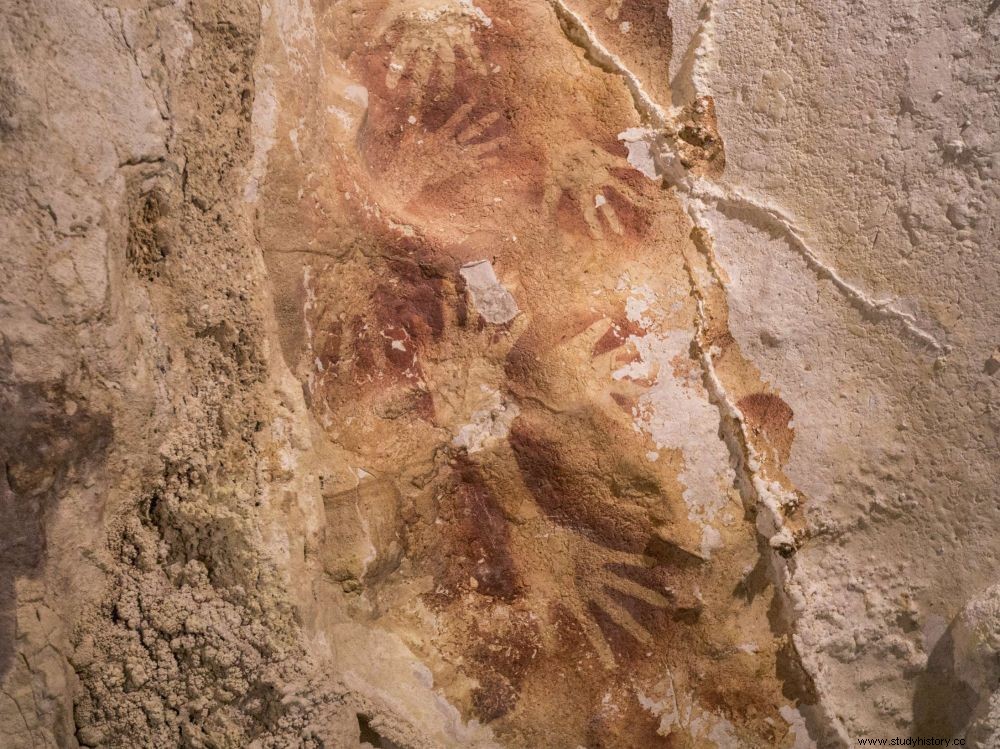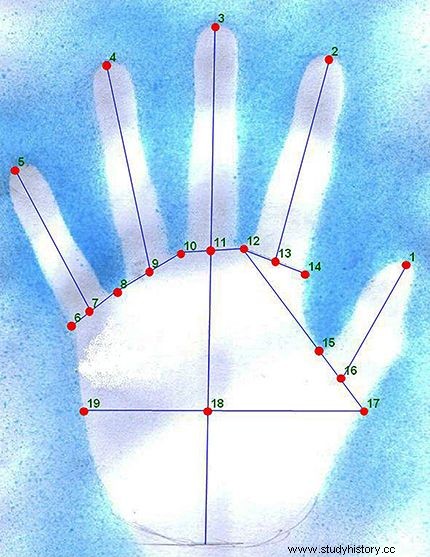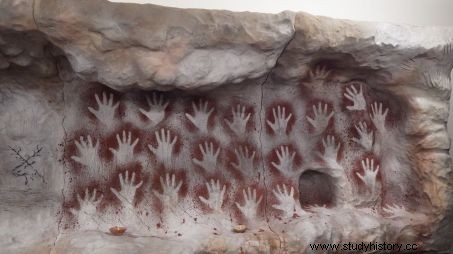The use of a forensic technique would make it possible to determine the sex of the authors of the negative hands preserved on the walls of prehistoric caves, with a success rate of more than 90%.

Rock art:35,000 year old negative hands reproduced on the walls of a rock shelter (Indonesia).
Who owned the tens of thousands of Paleolithic handprints found on cave walls in Europe, Asia, Africa, and America? These so-called "negative" outlines, made with a stencil after spraying clouds of red ocher or manganese black pigments. Was it the work of men? Women? Children? Of all without distinction? The question of the sex of the possible authors of these moving testimonies left all over the world (such as Gargas, in France, Cueva de las Manos in Argentina, El Castillo in Spain, or Sulawesi, in Indonesia) by our hunting ancestors -pickers has long been agitating the experts. A recent study may well provide an answer. She explains that we could determine the sex of the author of a handprint with a degree of accuracy of 90%, thanks to a technique used in forensic sciences.
Experimental reproduction:realization of a negative hand, using traditional methods of spraying pigments. © Jason Hall / University of Liverpool
"Contrary to what has long been thought, the shape of the hand gives more indications of an individual's gender than the size or length of their fingers"
“The application of geometric morphometry, to the shape and size of the hands, has indeed been tested with great success “, explains Emma Nelson, anthropologist at the University of Liverpool (United Kingdom), the person in charge of the project developed in collaboration with biologists, anthropologists and archaeologists from this same university and that of Witwatersrand (South Africa). This technique makes it possible to analyze the shape of a structure, biological or not, by comparing multiple points. 19 points have thus been defined in the palms and fingers of contemporary subjects, then their coordinates noted in order to proceed with distance calculations. This operation was reproduced on 132 prints (those of the right and left hands of 53 men and 79 women) on which these same points had been assigned. "This approach allows palms and fingers to be measured independently because, contrary to what we have long thought, the shape of the hand gives more indications of an individual's sex than the size or length of their fingers “, specifies Emma Nelson joined by Sciences et Avenir.

Biometric markers placed on the palms and fingers. © Patrick Randolph
The very high success rate obtained by this experimental identification method, carried out in the laboratory, could be successfully applied to the parietal works found in the decorated cavities. Other techniques such as Manning's index - "length ratio between index and ring finger that would be representative of the sexual identity of individuals – have been tested in the past on Oceanian sites by French prehistorians from the CNRS, with the help of Kalimain software. So many analysis systems that could accelerate research on the identity of the authors of these pictorial achievements with symbolic meanings that are always difficult to decipher, even if the ritual or initiatory aspect is largely favored for these rock frescoes, the oldest motifs of which date back 40,000 years old.

Experimental reproduction of negative hands of men and women in simulated cave conditions.
